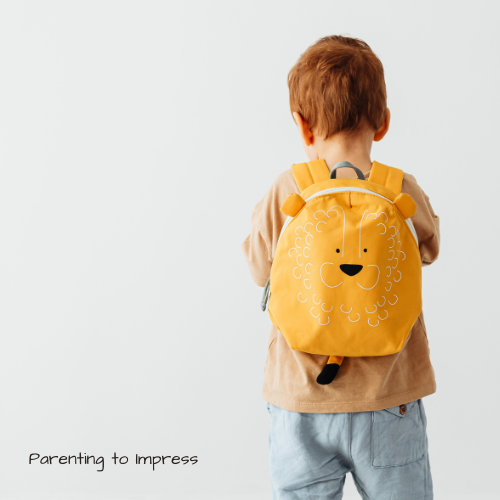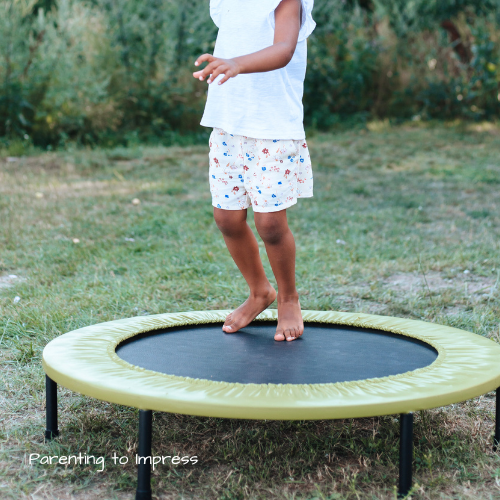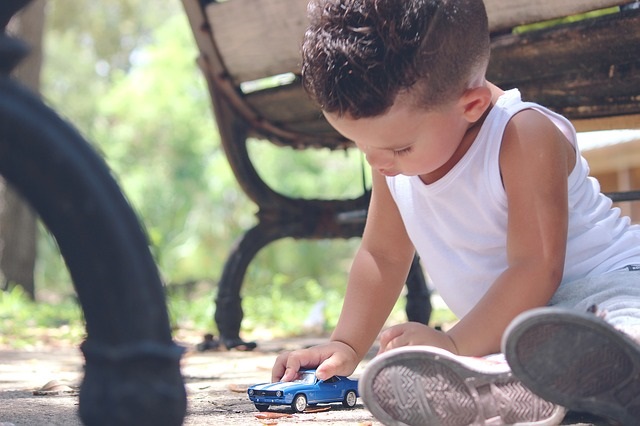Have you ever watched a child spiral into a whirlwind of energy or meltdown, unable to focus or slow down? I’ve been there. Whether it’s sensory sensitivity, ADHD, or just an overwhelming day, sometimes kiddos need a little extra help to calm down and regulate their emotions. Through occupational therapy, I learned two simple strategies that transformed our home.

The Power of Weighted Objects
This post contains affiliate links, meaning I may receive a small commission if you make a purchase through my links, at no extra cost to you.
One of the first things Bubs’ occupational therapist introduced was weighted objects. She explained that deep pressure helps kids focus and self-regulate. There are many purchasable options available—some children use weighted blankets at night or vests during the day. At therapy, Bubs threw a 5 lb ball 40 times to provide deep pressure input. At home, we’ve had great success using a simple backpack filled with a few books and a rice bag during meals.
During a particularly rough meltdown, I grabbed a child-sized backpack, added a few books, and had Bubs wear it. At first, he resisted, but I explained he needed to wear it until I took it off. Soon, I noticed a shift. The weight seemed to ground him, helping him regain control of his emotions and body.
The same strategy worked with Little Man. When I saw his “crazy eyes”—the telltale sign of an oncoming storm—I knew it was time to step in. A weighted backpack helped settle the chaos, allowing him to refocus and play peacefully. Because backpacks are a common sight, he could wear it anywhere—at the grocery store, in restaurants, and even at church. While my closest friends understood its purpose, most people simply saw a little boy carrying a backpack full of fun.
If a backpack wasn’t available, my boys carried groceries, pushed a weighted cart, or transported household items from one room to another (sometimes just to keep them busy). They thought they were helping or having fun, but I knew the deep pressure input was helping them self-regulate.
At mealtime, I laid a long, narrow, homemade rice bag across Little Man’s lap, adding gentle weight to help him stay calm and focused. This simple tool not only provided sensory input but also served as a subtle reminder to remain in his chair, giving him a sense of responsibility during meals.

Why a Trampoline Was a Must-Have for Us
Another incredible tool that has helped us is a trampoline. When Bubs first started therapy for delays and Sensory Processing Disorder, both our occupational therapist and pediatrician strongly recommended getting one. Jumping engages the brain in a powerful way, helping kids regulate their bodies and emotions.
We started with a mini trampoline for indoor use, and later, we were gifted a 12-foot outdoor trampoline. While trampolines must be used wisely, I sing their praises loudly. When Bubs was having a rough day, I led him straight to the trampoline—indoors or out. On the mini trampoline, I held his hands to help him jump until he began jumping on his own. Outside, I zipped him inside the netted trampoline and watched the transformation. I could tell just from his jumping when his body felt calm again. He even added a ball to the mix, throwing it in the air and chasing it as it came down—adding another layer of movement and focus.

Finding What Works for Your Child
Of course, every child is different, so it’s always best to check with a professional about the appropriate weight and duration. But if you’re looking for simple, practical tools to help your child feel more in control, weighted objects and trampolines might be the game-changers you’ve been searching for! They both made a huge difference in our home.
Discover More Helpful Posts
- What is Sensory Processing Disorder?
- How Visual Perception Would Have Helped Her
- Is Your Child Meeting Pragmatic Milestones?
- Does Early Intervention Help?
- When You Begin a Therapy Journey
- Do. Not. Stop.
